Exquisite Hand-Blown Glass at Kuivato Gallery
A wise man once said, “Good design is everywhere, even the most unlikely of places. All you have to do is look.” Though the source of this aphorism shall remain un-named, the words are close to my heart, and to the business of 3rings, since they continually remind me to open my eyes and see opportunity in every space I traverse. As, for instance, the stunning collection of hand-blown glass I encountered recently at the Kuivato Gallery in Sedona, Arizona.
Chandelier. Designed by Rick Strini.
Being unschooled in the ways of Tlaquepaque–an arts and crafts village on the shores of Sedona’s Oak Creek–I sort of expected the usual assortment of “indigenous” ceramics and chotchkes one might find in Tijuana. Imagine my surprise, then, on entering the spacious, white-walled expanse of Kuivato, where, in addition to an impressive array of studio editions by Dale Chihuly, I discovered work by the latter’s contemporaries, Rick Strini and Robert Verhees.
Chandelier. Designed by Rick Strini.
Assorted Clusters. Designed by Robert Verhees.
Assorted Clusters. Designed by Robert Verhees.
Chandelier. Designed by Rick Strini.
According to Kuivato Art Consultant Cinda Mayer, Strini’s blown-glass chandeliers have the dubious fame of being continually mistaken for work by Chihuly. Though the frequent confusion is clearly complimentary, it must be a source of frustration for the artist, whose intricate, sprawling, serpentine designs certainly deserve their own identity, especially because Strini is so close to the process: “Each of his works is individually made by his own hands… His brilliant artistry is limited only by the length of his arms. Working with no assistants, every nuance in shape, design, color, and luminescence is derived from the heart of artist Strini.” At first glance, Strini’s Kuivato pieces seem to be a tangle of organic curvature, with elongated serpents lashing out in every direction (the head of Medusa looms large). But after some additional seconds of immersion, one is impressed with the chandeliers’ display of control and containment amid chaos. Each fixture illustrates extraordinary symmetry around a central axis, a quality that balances the whole, constraining the symphony of color and motion–of outright wildness–just enough to give us a reference point, to find a place for it amid our own mental chaos.
Verhees, for his part, seems obsessed by the perfection of the inscrutable circle. His “Assorted Clusters” are multi-colored assemblages of variously-sized globes, strung together in a kind of pendulous anticipation. Indeed, these pieces seem to defy gravity–they strike me as being in a kind-of perpetual or suspended descent, like a cohering assortment of candy-colored soap bubbles or a vine of grapes strung by Willy Wonka himself.
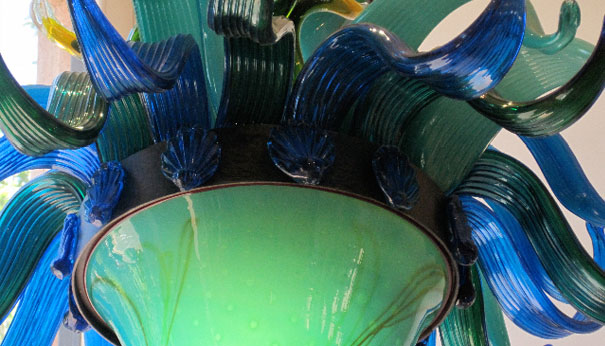
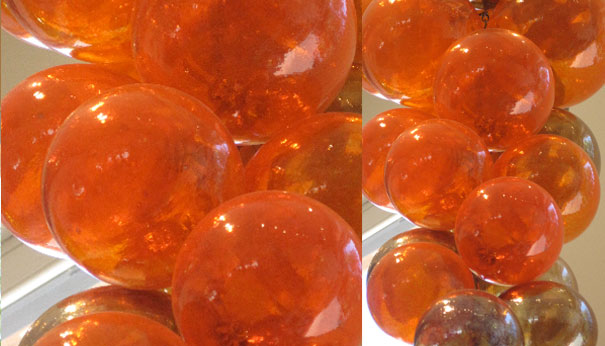
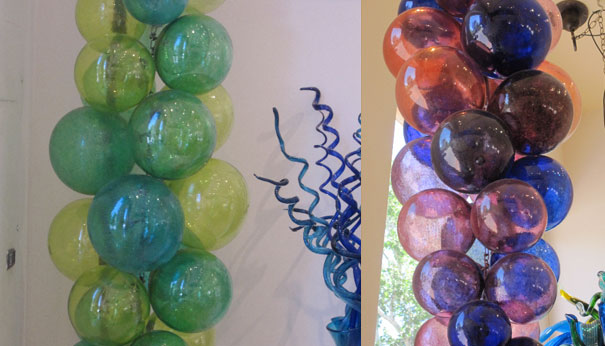
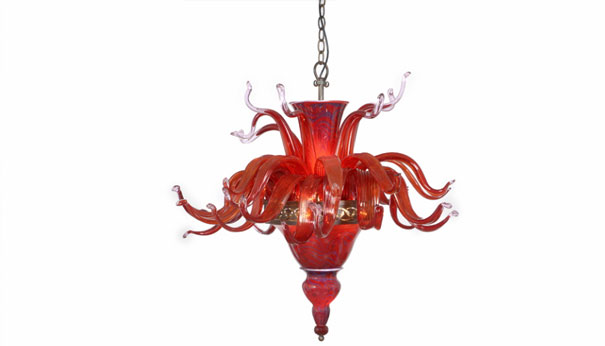
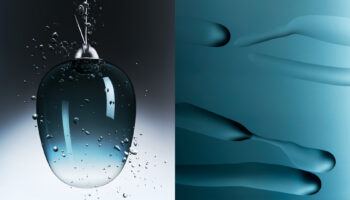
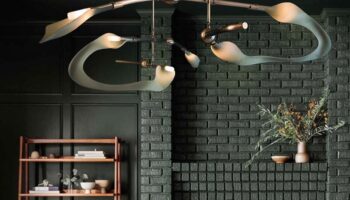
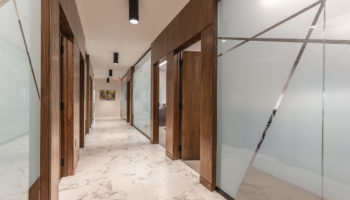

Leave a Reply